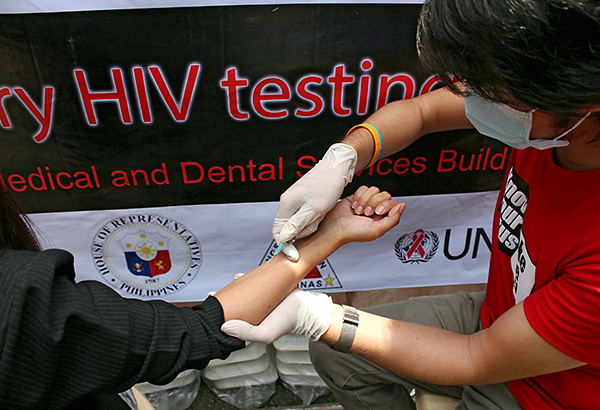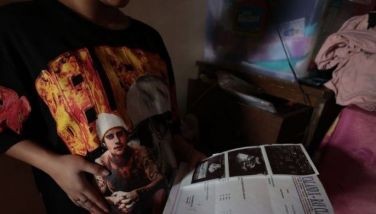DOH seeks immediate tests, treatment for HIV

According to DOH Secretary Paulyn Ubial, they are advocating for the “risk groups” to get themselves tested for HIV so the DOH could provide them with free anti-retroviral therapy (ART). Boy Santos, File
MANILA, Philippines - As the country’s HIV/AIDS cases soar at an alarming pace, the Department of Health (DOH) is implementing the “test and treat” strategy to make sure that all infected individuals get immediate treatment.
According to DOH Secretary Paulyn Ubial, they are advocating for the “risk groups” to get themselves tested for HIV so the DOH could provide them with free anti-retroviral therapy (ART).
But citing a survey done in 2015, she said only 16 percent of the high-risk population undergoes testing and only 35 percent get treatment.
“We want 90 percent of high risk tested and 90 percent treated. That’s the only way we can reverse (the) epidemic…This is how other countries are able to reverse the HIV epidemic in their countries,” she noted.
Because of this, the DOH decided to shorten the testing procedure to make sure that those who tested positive for HIV would immediately receive ART.
“Before, if the confirmatory test shows positive result, another confirmatory test is done and it takes about a week before the results come out,” Ubial said.
She said many infected individuals do not come back for the result of the second test primarily due to the stigma associated with the disease.
When this happens, they also miss out on ART, a concoction of drugs that do not kill the virus but slows down the progression of HIV into AIDS.
Ubial added that under the new protocol initiated in 2015, results should be released within two to three hours and if there are two positive results, the infected individuals can go to a DOH treatment hub and start treatment.
Aside from this, the DOH also did away with the policy that ART should be administered only on those whose CD4 count is below 200.
Now, anybody who is positive for HIV is given ART regardless of CD4 count.
CD4 or CD4 T-lymphocytes are the cells in the body being attacked by HIV. It is the most important indicator of how well the immune system of an HIV patient is and the strongest predictor of the progression of HIV into AIDS.
Ubial said the test-and-treat strategy, along with other intervention programs like increasing the correct knowledge on HIV transmission, preventing HIV transmission especially among the risk groups, abstinence and correct and consistent condom use, could reverse the country’s HIV epidemic.
Based on the Joint United Nations Program on HIV/AIDS (UNAIDS) Data 2017 report, the Philippines had the highest rate of new infections in Asia and the Pacific from 2010 to 2016 at 140 percent.
The report showed that in 2005, the country documented less than 1,000 cases but the number rose to 4,300 in 2010 and 10,000 in 2016.
Ubial maintained that if not for the intervention programs implemented by the DOH during this period, the increase would have reached 177 percent.
DOH data showed that from January 1984 to June 2017, there had been 45,023 HIV/AIDS cases documented in the country. This year, 30 new infections are being seen daily, up from one in 2008; four in 2010; nine in 2012; 17 in 2014 and 26 in 2016.
- Latest
- Trending






























